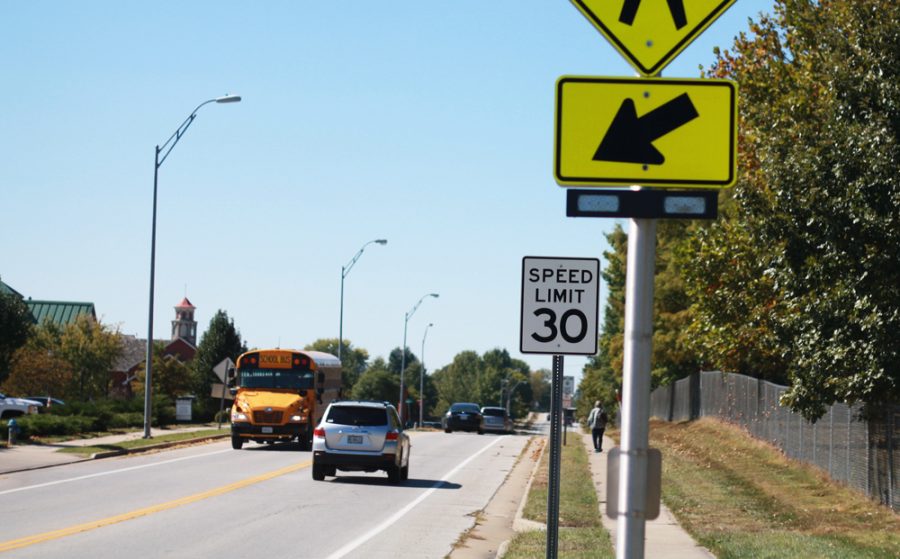With many students receiving their drivers’ license, as well as the freedom to travel to and from places around town on their own accord, the Columbia Police Department is increasing the enforcement of school zone speed limits.
After obtaining a grant from the Missouri Department of Transportation (MoDOT)-Division of Highway and Traffic Safety, CPD now has the funding to pay officers who work overtime to enforce speed limits and other traffic ordinances. While the grants usually run from Oct. 1 to Sept. 30, CPD began enforcing school zones the first day of the 2015-16 school year, Aug. 18.
“I believe the grant funding we receive for traffic enforcement is effective in reducing traffic crashes,” Sgt. Curtis Perkins said. “The enforcement we do also creates a deterrent effect as a citizen sees an officer and is reminded to slow down without any action on the part of the officer or sees someone else stopped and reminds them they do not want to get stopped for not obeying traffic laws.”
The purpose of the grant provided by MoDOT is to enforce hazardous moving violations that cause traffic crashes. Violations include speeding, following too closely and lane violations.
“The goal of our enforcement is not to write as many tickets as we can, but create a safer community by reducing traffic crashes,” Perkins said. “Traffic enforcement is an important component of getting drivers to follow the rules of the road whether through deterrence or behavior modification.”
To combat the general problem of speeding on city roads, CPD is focusing in on school zones first.
“Since school zones have often younger kids walking around they fit the area for potential crashes,” Perkins said. “Through enforcement in the school zone we hope to create awareness and get people to pay attention, especially while in the school zones. With school just beginning the new year, it was a good time to raise awareness on this topic.”
Senior Elaine Phillips, who has been driving with a driver’s license for two years, follows the speed limits set in school zones selectively.
“I’ve been trying, but probably not as much as I should have,” Phillips said. “I definitely follow them around elementary schools because little kids are unpredictable and they can dart out, but around high schools and sometimes middle schools, I’m a little less vigilant in putting my foot to the brake.”
While senior Sydney Tyler does occasionally speed, she, like Phillips, also adheres to speed limits around elementary schools, but a little bit less so on city roads.
“You’re never really driving to drive,” senior Sydney Tyler said. “You’re driving to get somewhere, so you want to get there as fast as you can, and I tend to drive faster when I’m in a bad mood, or when I’m late or stressed, and when I’m late, I’m stressed and in a bad mood, so those usually, I’m driving a little faster.”
But both Tyler and Phillips agree that ensuring the safety of young children is a worthy allotment of funds.
“Kids are so precious and they do not need to be killed because a driver is just not being responsible, so I think that is a good use of funds,” Phillips said. “I don’t think [there should be] as much [enforcement] in high school and middle school just because the kids are older and they pretty should know you don’t go out in the road.”
Categories:
MoDOT grant allows for stricter enforcement of school zones
October 6, 2015
Outside of RBHS, the speed limit is 30 while around elementary schools, the speed limit is 20. Speed limit signs around Columbia Public Schools will now be enforced to provide a safer environment around the schools.
0
Tags:
More to Discover
















































































